I have one listview in my application,it contains two rows one for task and another one for alarm,date,severity. Initially first row of the list item only displayed for all list item and the second one is invisible. When i click the list item the second row displayed for that item as well as click another list item at that time the above list item closed that second row. Its working fine for me...My problem is if i open one list item and then swipe the listview at then i click the another list item at that time the above one cannot be closed because the above list item instance will be chnaged.please any one help me how to solve this problem...
int lastselectedPosition == -1
@Override
public void onItemClick(AdapterView<?> arg0, View view, int position,
long id) {
TextView textviewDate=(TextView)view.findViewById(R.id.taskTimeidDaytoDay);
selectedtaskDate=textviewDate.getText().toString().trim();
if (lastselectedPosition == -1) {
Log.i(TAG,"Loopif:"+lastselectedPosition);
TextView twTaskTime = (TextView) view
.findViewById(R.id.taskTimeidDaytoDay);
TextView twSeverity = (TextView) view
.findViewById(R.id.severityidDaytoDay);
TextView twAlarm = (TextView) view
.findViewById(R.id.alarmidDaytoDay);
twAlarm.setVisibility(view.VISIBLE);
twSeverity.setVisibility(view.VISIBLE);
twTaskTime.setVisibility(view.VISIBLE);
lastselectedPosition = position;
lastSelectedItem = arg0.getChildAt(position);
} else {
// Log.i(TAG,"LoopElse:"+lastselectedPosition);
lastSelectedItem.findViewById(R.id.taskTimeidDaytoDay)
.setVisibility(lastSelectedItem.GONE);
lastSelectedItem.findViewById(R.id.severityidDaytoDay)
.setVisibility(lastSelectedItem.GONE);
lastSelectedItem.findViewById(R.id.alarmidDaytoDay).setVisibility(
lastSelectedItem.GONE);
if (lastselectedPosition != position) {
view.findViewById(R.id.taskTimeidDaytoDay).setVisibility(
view.VISIBLE);
view.findViewById(R.id.severityidDaytoDay).setVisibility(
view.VISIBLE);
view.findViewById(R.id.alarmidDaytoDay).setVisibility(
view.VISIBLE);
lastselectedPosition = position;
lastSelectedItem = arg0.getChildAt(position);
} else {
lastselectedPosition = -1;
lastSelectedItem = null;
}
}
GetView():
@Override
public View getView(int position, View view, ViewGroup parent) {
Log.i("XXXX", "Inside getView");
final DaytoDayTaskGetterSetter objDaytoDaygetset=getItem(position);
TextView textviewTask;
TextView txtviewAlarm ,txtviewTaskTime ,txtviewSeverity;
Log.i(TAG,"InsideGetView:"+position);
LayoutInflater inflater=(LayoutInflater)context.getSystemService(Activity.LAYOUT_INFLATER_SERVICE);
if(view==null)
{
view=inflater.inflate(R.layout.daytodaylistlayout,null);
}
Log.i("XXXX", "before first test");
textviewTask=(TextView)view.findViewById(R.id.tasknameidDaytoDay);
txtviewAlarm=(TextView)view.findViewById(R.id.alarmidDaytoDay);
txtviewSeverity=(TextView)view.findViewById(R.id.severityidDaytoDay);
txtviewTaskTime=(TextView)view.findViewById(R.id.taskTimeidDaytoDay);
return view;
}


In first i click the "gdfgdtet" list item it show another row and then i click the second list item "dfgsdgsd" at that time the above list item "gdfgdtet" closed the second row.This is a normal output.Suppose if i open the "gdfgdtet" list item and then swipe the listview at that time both of "gdfgdtet" "dfgsdgsd" will be opened and crashed...because the above one list item reference changed when i am swiping please how to solve this problem...